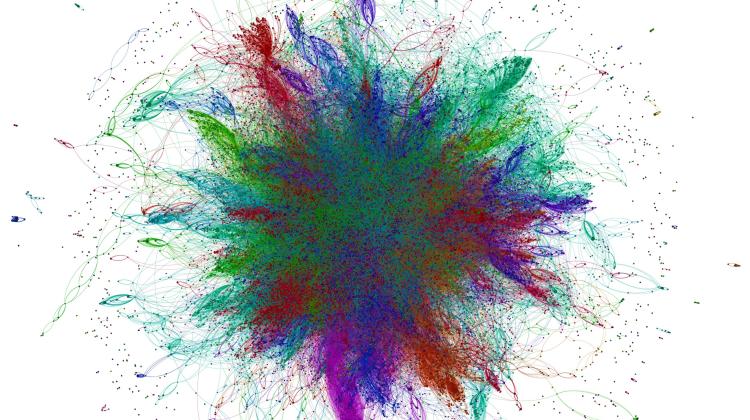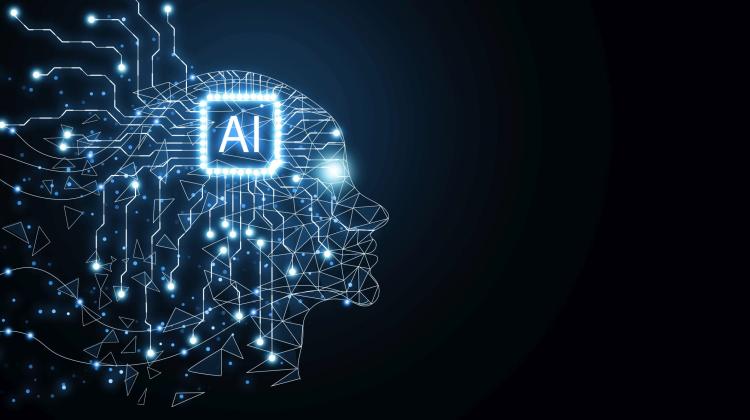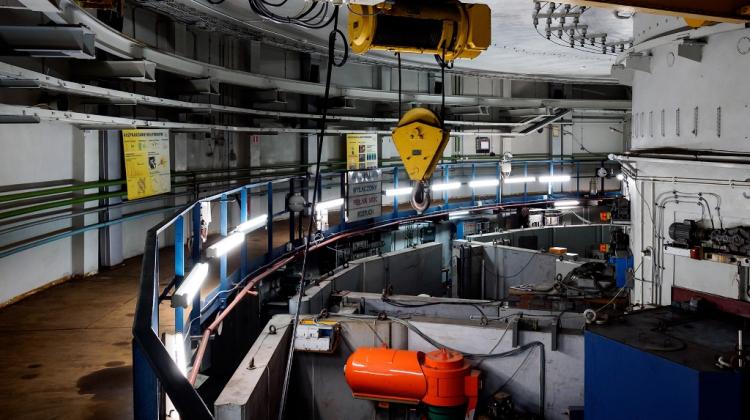Science and law: graphs and links can help to understand regulations
 Graph of connections between legal acts published in the Journal of Laws between January 1990 and July 2014. Source: A. Zadrożny
Graph of connections between legal acts published in the Journal of Laws between January 1990 and July 2014. Source: A. Zadrożny
To better understand how complicated the law is in Poland, you can use methods used in science, for example link regulations to each other and present the legal system in the form of graphs - physicist Adam Zadrożny pointed out in an interview with PAP.
The texts of laws are not written to be read from top to bottom, but are full of references to other provisions. To find out what the law allows in a given situation, it is not always enough to read a single excerpt of an act. Even a short fragment often contains references to other laws and articles, which also need to be consulted to know what is allowed and what is not. In addition, provisions clarifying the circumstances in which certain provision does not apply, and another provision applies instead, may be included further in the act or in its amendments. A citizen who does not have legal education, can easily become confused.
Dr. Adam Zadrożny is an astrophysicist at the National Centre for Nuclear Research, and has just defended his doctoral dissertation on methods of searching for gravitational waves. He became interested in law a little bit by chance. "One day I sat down to fill out a tax return form and began to read the provisions. The deeper I looked, the harder it was to me to see the big picture" - he said in an interview with PAP.
The physicist decided to see how the computer tools he used on a daily basis could help in the analysis of the law. The most intuitive part was to visualize the system of hyperlinks, network of connections between particular legal acts.
On the basis of the Internet System of Legal Acts he prepared charts that illustrate the links between various legal acts. The nodes of the graph are the various legal acts, and the lines between the points are links between these documents. "In Poland we have more than 40 thousand legal acts with more than 100 thousand links" - summed up Dr. Zadrożny.
The researcher admitted that not all Polish legal acts could be quickly analysed - some of them are only available as scanned prints, and not as a text which can be easily searched using a computer. At the stage of preliminary results of the project, prepared were graphs of links between acts published in the Journal of Law in the years 1919-1939 and in the period from January 1990 to July 2014.
"Using graphs we could determine the complexity of the law and compare the complexity of regulations in various countries" - said Zadrożny. He explained that it would also be interesting to investigate how the complexity of law affects the economy and whether regulated economy works better than unregulated economy.
According to Dr. Zadrożny, research using graphs would allow to look at the legislative process comprehensively and, for example, better understand the dynamics of lawmaking - how often the regulations are removed or created.
Studying the network of hyperlinks in the law - according to the researcher - would be interesting not only for researchers, but it could also be useful for legislators and other citizens. Provisions would be easier to understand if, in the case of every regulation on the official government websites the links between regulations were clearly visible and all provisions would be carefully hyperlinked. This would allows users to immediately see with which regulations he should read to understand each provision and where he can finish reading without missing important references. Single acts could also be presented in the form of a graph.
Dr. Zadrożny stated that the legislators could also use the example of the procedures used in computing. For example, when specialists make changes in the system on a large portal, there are often errors, unforeseen at the code design stage. These errors can be clearly seen after the system re-launch, and specialists know what they need to repair. According to Dr. Zadrożny, the state should use a similar procedure: the legislators also should be sensitive to errors occurring when legislating. Such red flags for the state should be, for example, a large number of requests to the authorities to provide interpretation of the regulations, lawsuits against the state, as well as situations where the courts do not agree on the interpretation of the regulations and change decision in the subsequent instances. Such events - according to the researcher - should be a sign that errors occurred while "coding" the law and they must be eliminated.
Dr. Zadrożny admitted that legal informatics might not be a new subject of research, but - in his opinion - not enough attention has been given to it in Poland. For now, Zadrożny treats the subject as his side project, but does not rule out applying for a grant in the future to expand the study.
PAP - Science and Scholarship in Poland, Ludwika Tomala
lt/ agt/ mrt/
tr. RL
Przed dodaniem komentarza prosimy o zapoznanie z Regulaminem forum serwisu Nauka w Polsce.


















